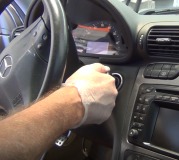Yup. I get exactly what you're saying, but I don't think a loss of compression is the issue. That only leaves fuel, spark, and correct timing. We know timing isn't the problem because it runs sometimes. There's two potential reasons there are no codes. Most commonly the problem is in a non-monitored circuit. That would include all of the fuel supply system and the ignition coil. The Engine Computer only knows it fired the coil. It has no way of knowing if a spark occurred.
The second reason for no codes is the conditions haven't been met to set the code. As an example, when the computer sees pulses from the crank or cam sensor, it expects to see pulses from both of them. If the 8 volt supply wire is broken, neither sensor will work. Most of the time no codes will be set because the computer thinks the engine isn't rotating.
On older cars, no code would be set for the speed sensor if there already was one stored for the MAP sensor. That's because the MAP sensor was needed to detect high manifold vacuum to realize that the car was coasting, therefore it was moving, therefore there was supposed to be a signal from the speed sensor. That's how it differentiated between a bad sensor vs. Standing still at a stop light.
Those are just a couple of examples of why there could be no code. I know you're not using a simple code reader, but the reason for mentioning the Chrysler scanner is there is no aftermarket scanner that will ever do as much as the manufacturer's equipment. The aftermarket stuff has progressed a long way from just reading sensor values and switch states but they are still always a few years behind. With the DRB3 you can also fire the ignition coil and injectors without having to crank the engine.
There's no point in looking at injectors or the fuel supply system since the plugs were wet and starting fluid didn't help. All that leaves is spark, but you say that's fine too. I'm under the assumption this has been an ongoing problem. If that's not correct and the problem just started, draw a little fuel from the test port, throw it on the floor and see what happens when you throw a lit match on it. We had one car come in with the same symptoms you're describing and after spending all day on it, the fuel turned out to be mostly water. Right after that a second car came in with the same problem. The "fuel" put the match out.
Since we're obviously looking for something unusual, here's one you might consider. When the core inside the crankshaft position sensor is cracked, it can develop multiple pulses. Normally it develops 12 pulses per crankshaft revolution corresponding to firing three injectors but extra pulses can trick the Engine Computer into thinking the engine is running faster than it really is and it will try to create the "idle flare-up". That's where engine speed goes to 1500 rpm for a couple of seconds right after startup. You could compare that to pumping the gas pedal during cranking which would lead to flooding. At that point spark won't do any good.
I'm sure your mechanic hates throwing parts at a problem, but this might be the time to try a new crankshaft position sensor. New ones come with a thick paper spacer stuck to the end or a thin plastic rib molded on the end to set the air gap. If you reinstall an old sensor with the rib, you're supposed to cut the remaining part off, then use a new paper spacer.
Caradiodoc
SPONSORED LINKS
Sunday, January 23rd, 2011 AT 1:44 AM




